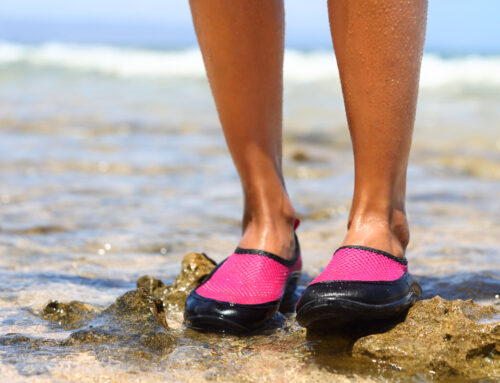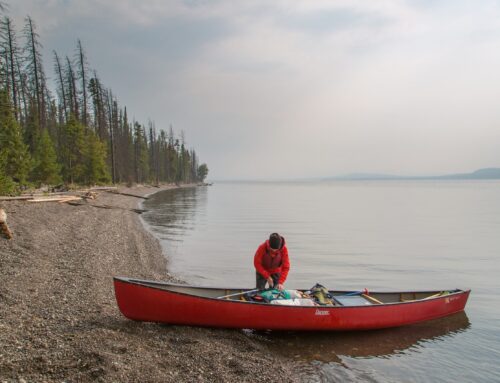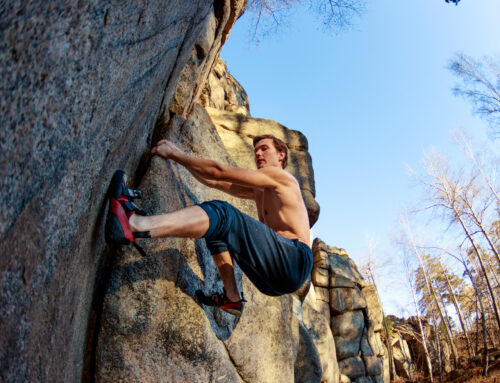Updated June 9, 2021
If you’ve found your way to this page, it’s probably because you’ve noticed that there are several types of surfboards out there and you’re curious about what makes them different from each other. Different shapes, materials, and sizes are typically used for the wide range of waves and conditions out there, and which configuration you choose will depend on your surfing ability, the types of waves you typically ride, and your personal style. In this article, we’ve broken down the different surfboard types to help you decide which one may be best for you!

What are the Different Types of Surfboards?
Longboard
- Length: 8 feet and up
- Fins: Most common configuration is thruster (3 fins)
- Best for: Beginners, smaller waves, smooth or straight riding

Longboards are one of the most traditional surfboard types. They are also said to have been the very first surfboard style brought to the continental United States (California) by a Hawaiian man in the early 1900s. Today, you’ll typically find these boards in use with beginner surfers and in areas with smaller, more mellow waves.
Longboards are typically 8 feet or longer and have a rounded nose. They come in foam top, epoxy, and polyurethane constructions, but the foam top versions are most popular with beginners. Because they’ve got so much surface area and buoyancy, they’re the easiest kind of board to paddle. However, they can also be cumbersome to ride because of their size, and they’re much harder to turn than other types of surfboards. You also can’t duck dive on a longboard – you have to learn to turtle roll instead.
If you’re just starting out with surfing, you are most likely going to start on a longboard. Since they’re the easiest kind of board to paddle and balance on, it makes a great companion for beginners. For more experienced surfers, longboards are typically used to ride smaller waves smoothly.
Shortboard
- Length: 5.5 feet to 7 feet
- Fins: Most common is thruster (3 fins), but can have 2-4 fins depending on design
- Best for: Intermediate to advanced surfers, turning and gaining speed in any sized waves

Of all of the different types of surfboards, the shortboard is the most popular. Lovingly known as the “pocket board,” shortboards didn’t become popular with surfers until the early 70’s, when a surfboard designer named Dick Brewer helped popularize the style. Today, you may notice that the vast majority of surfers use shortboards to ride the waves and “shred the gnar.”
Ranging in length from 5.5 to 7 feet, these shorter, zippier boards typically boast a sharper nose and perform well in most conditions. Typically, they come with three fins – the thruster configuration. Shortboards are easier to duck dive and make quick turns on, but much harder to paddle than longboards. Additionally, they require super solid pop up form and balance to ride, as their smaller surface area makes them much less stable than longboards. Once you master movements and balance on your shortboard, you’ll find they’re much easier to turn and control
While we wouldn’t recommend starting off on a shortboard for your first time surfing, they rank among the most popular types of surfboards for a reason!
Fish/Swallowtail
- Length: 5 to 7 feet
- Fins: Twin-fin
- Best for: Fast surfing in small or medium-sized waves

For experienced surfers who like to zip around quickly in the waves, the fish is one of the more popular types of surfboards. Designed by Steve Lis from a snapped longboard in the late 1960s, the fish surfboard came into the scene around the same time as the shortboard. It was designed to be able to tackle challenging waves like a shortboard, with the ease of paddling of a funboard or longboard.
Also known as “swallowtail” boards, fish surfboards are typically wider across and slightly shorter in length than shortboards, making them great for higher-speed surfing in small or medium waves. You can identify these by their signature two-point tails, which is what gave them their name in the first place.
Malibu/Funboard
- Length: 6 to 8 feet
- Fins: Thruster or single fin
- Best for: Smooth riding in smaller waves

The funboard, also known as a malibu, is another one of the types of surfboards you’ll see on the waves. Designed as a hybrid between a longboard and a shortboard, these medium-sized boards are popular with beginners and in small-wave conditions. With their rounded nose and larger surface area, they’re generally easy to paddle and balance on, but harder to maneuver for turns or in more challenging conditions.
Gun/Big Wave
- Length: 7 to 12 feet
- Fins: Thruster
- Best for: Advanced surfers riding in big waves or extreme conditions

An essential board for big wave surfers, the gun is a longer board with similar features to a shortboard that was designed to handle extreme or challenging conditions. Created by George Downing in 1949, these boards are most commonly found in places like Hawaii, where there are plenty of big waves to surf. They’re stable enough to enter these large waves seamlessly but, like longboards, can be difficult to turn.
Tow-In
- Length: 6 to 7 feet
- Fins: Thruster or quad
- Best for: Jetski-assisted big wave surfing

The tow-in surfboard was designed for big wave surfing that’s jetski assisted. Heavier and shorter than gun surfboards, the tow-in is probably the least popular board on our list, but was made necessary by the conditions of boat-assisted big wave surfing. Unlike traditional surfboards, the tow-in usually has foot straps for additional stability on the board while following the jetski or boat.
Hybrid
- Length: Varies
- Fins: Varies
- Best for: Varies

These days, there are lots of surfboard designs that don’t quite fit into these rigid categories. Many times, surfboard companies will create hybrids between fish, shortboards, fun boards, and longboards, which can vary in length, rocker, tip and tail style, fin configuration, etc. We’ve grouped all of these into one large “hybrid” category, but there are a huge variety of boards that could fall into this group. Once you get lots of experience and learn your surfing preferences, you can better understand what length, width, rocker, and board style you prefer!
Stand Up Paddleboard
- Length: 9 to 12 feet
- Fins: Single fin
- Best for: Mild to moderate waves or flat water paddling

A mix between a kayak and a surfboard, stand up paddle boards (SUPs) are slightly longer and wider than a longboard and move through the water with a single paddle. Surfers can ride these in small to medium waves, or move beyond the shore and paddle farther out. Aside from use in the ocean, they’re also popular in lakes, rivers, and flatter water, and can be used for SUP yoga as well.
Unlike classic surfboards, these come in traditional designs using foam, epoxy, or polyurethane, but inflatable versions are also becoming increasingly popular. These balance excellently and are exceptionally stable, but can be cumbersome to maneuver or turn without the paddle.
What are Surfboards Usually Made Of?
In addition to the various types of surfboards, there’s also variety in the construction/materials used for their design. These are the most common materials used for surfboards today:
- Soft top/foamie – A common board material for beginners, the soft top surfboard consists of a foam core covered with a synthetic wrap. This makes these boards light and soft to the touch, which are great characteristics for beginners getting a feel for surfing. Soft tops are most commonly known for being super buoyant, stable, and light. They can also be less durable because of their soft, resin-free construction.
- Epoxy – Epoxy boards typically have an EPS foam core and an epoxy resin coating, which is known to be extremely strong and tough materials. Many – but not all – epoxy boards have some kind of stringer (either wood or PVC). These boards are light, durable, and are said to plane better in the waves, but can feel cumbersome in some situations.
- Polyurethane – Slightly heavier than epoxy boards, polyurethane boards consist of a polyurethane foam core with polyester resin on top, often reinforced with a wood stringer down the center. These are known for smooth carving/turning and greater responsiveness than epoxy or foam boards.
- Wood – Although they’re not so common anymore, you can still sometimes see classic wood surfboards out there. Of course, these are much heavier and less technical than the newer kinds of boards, so they’re not as easy to lug around or transport.






